Torrance Course and Kittocks Course at The Fairmont St. Andrews in St. Andrews, Scotland
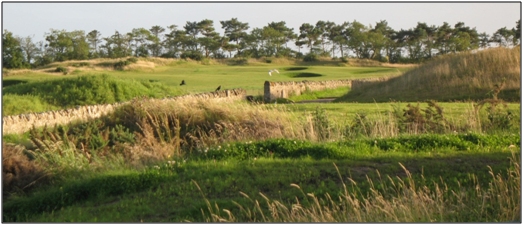
Scotland is the historic home of golf, and designing a golf course in St. Andrews is an opportunity of the highest honor. In 2005, Gary Stephenson was granted this honor when he was asked to redesign two golf courses south of St. Andrews at the Fairmont St. Andrews Bay Resort. These two courses were originally built in the 1990's and were experiencing drainage problems, turf health issues, playability issues, and the two courses did not have good reputations in the European golf community.
There was one specific problem that was of special concern to the owners. There is a cliff that is approximately 100' tall that separates the golf course from the bay. At the top of this cliff is a stone wall that is several hundred years old. Whenever it rained, storm water from the golf course would build up against this wall and was beginning to eat away at the foundation and was causing erosion problems not only to the wall, but also to the environmentally sensitive cliff and shoreline.
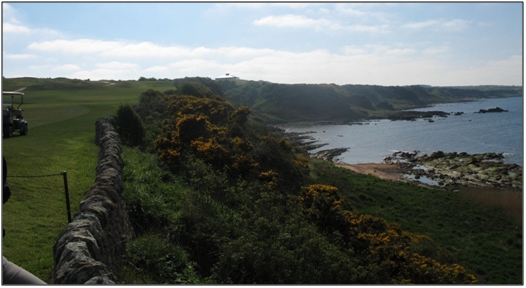
The coast line in Scotland, and especially around St. Andrews, is classified as SSSI (Site of Special Scientific Interest), which means that it is highly protected as an environmental element. To protect this area, it was determined that the courses needed to be redesigned and large storm water holding areas needed to be developed so that pressure could be taken off the old rock walls. As soon as planning began to take place, Gary Stephenson quickly realized that the drainage areas could, and should, be designed as high quality wildlife habitat.
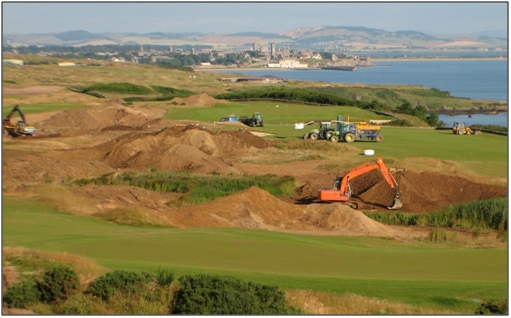
A plan was created to build seven different holding ponds connected by small waterways and drainage pipes. These ponds and waterways were sized based on engineering models with regards to the amount of storm water that needed to be detained. Once the surface area and freeboard was determined, the edges of the water bodies were shaped in a very irregular manner so as to create as much shoreline as possible which would then become bedding and feeding areas for waterfowl. The waterways were designed to allow ducks to easily move from one pond to the next.
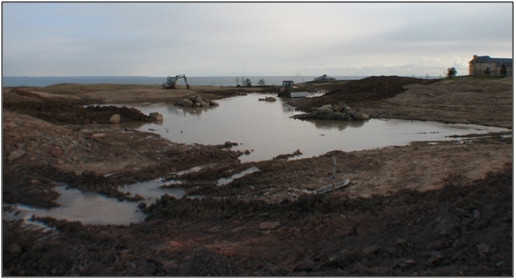

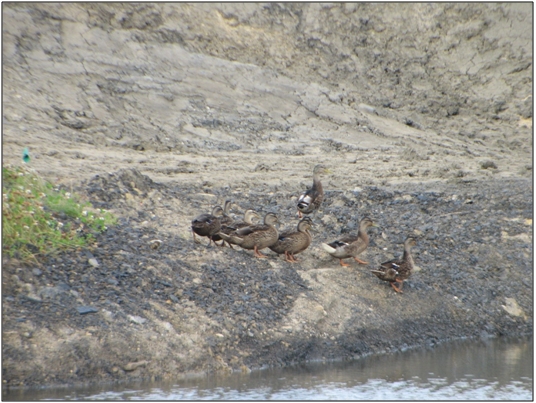
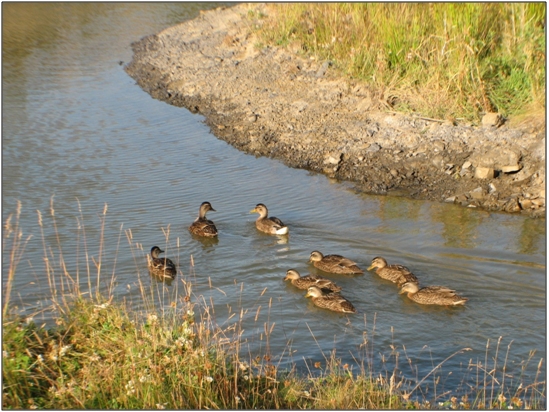
There was a significant amount of dirt that had to be excavated to build the storm water detention ponds. This material was used to shape mounds that would add beauty and drama to the course while also creating some vertical separation to provide safety between adjacent golf holes. These mounds were then planted with native grass seed and shrubs to create bedding and escape habitat for the many pheasant and rabbits that called the golf course home.
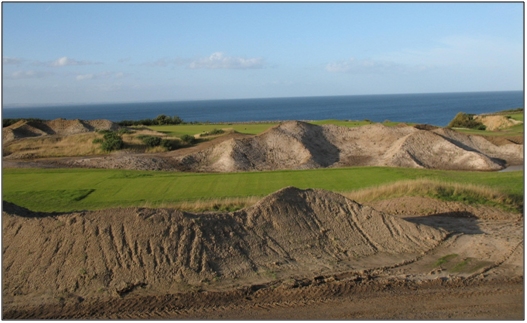
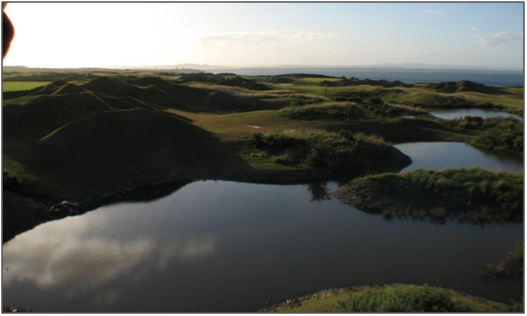
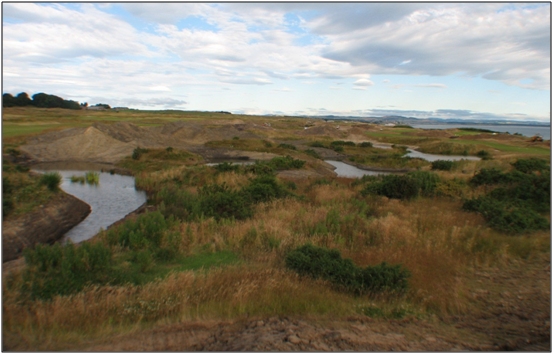
The results are stunning. The golf course no longer floods, and the wildlife has greatly increased on the site. Ducks and swans abound in the ponds, and the distinct call of pheasants is readily heard.
In addition to the successful wildlife habitat creation, the golf courses have also begun to receive much acclaim for their beauty, playability, fair challenge and excitement. The two courses have hosted many amateur events and smaller European PGA events. The Torrrance Course was used as the qualifying course for the 2010 Open Championship (British Open) which was held at the fabled Old Course in St. Andrews. For three years, the Torrance Course was the host course for the Scottish Senior Open (2009-2012).
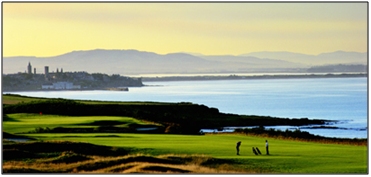
Just recently, the Fairmont St. Andrews was named:
- European Golf Resort of the Year 2012 by the International Association of Golf Operators (IAGTO)
- 2011 Golf Resort of the Year by Golf Tourism Scotland
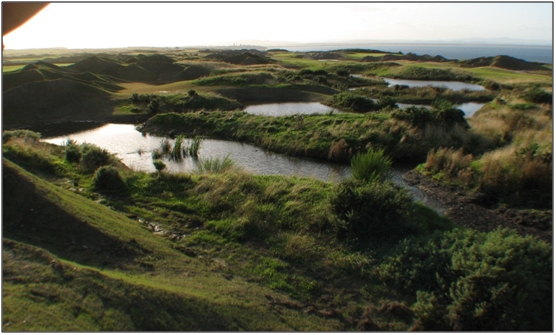
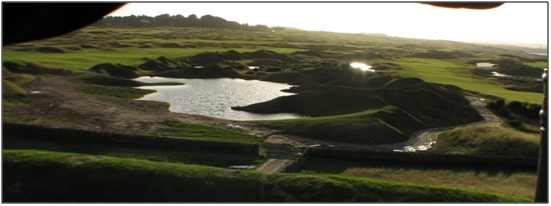
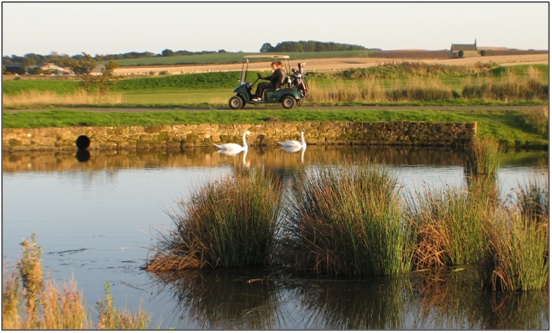
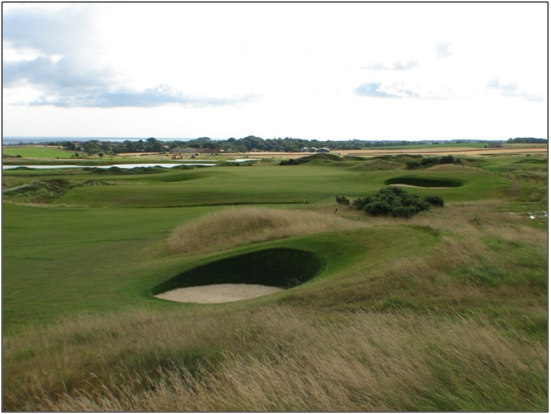
Back to list